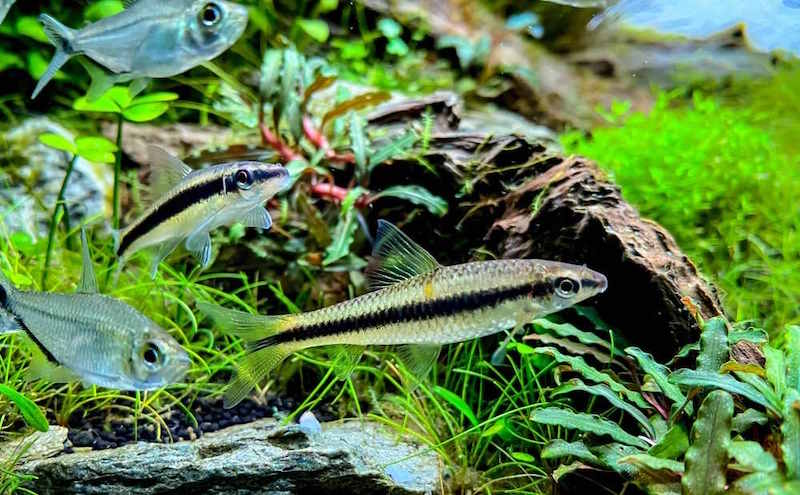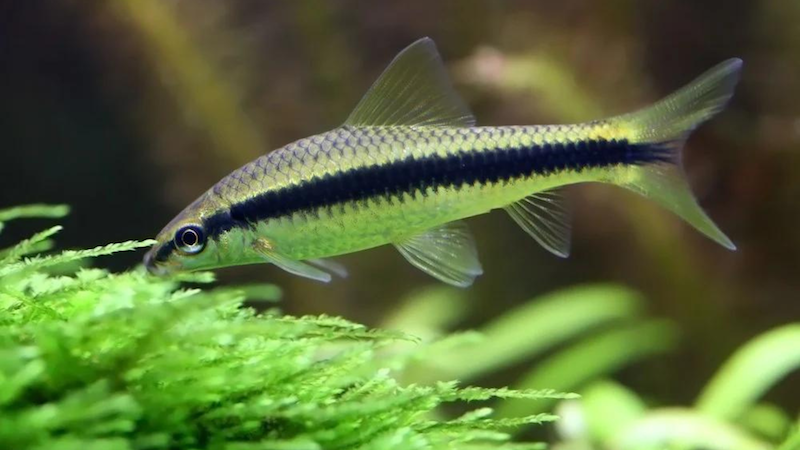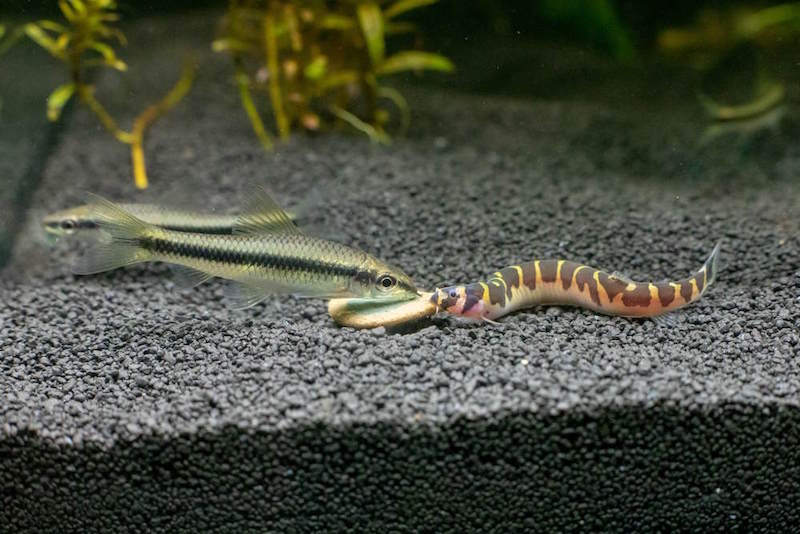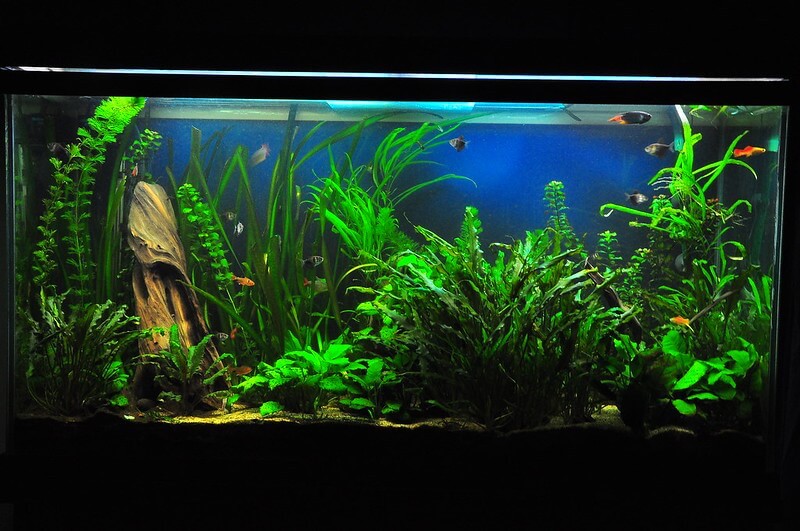Full grown Siamese algae eater: Size, care, prices and More

The Siamese Algae Eater is known for being native to Southeast Asia and offers both beauty and functionality to any aquarium. In this article, we’ll delve into the general information, care requirements, tank setup, and pricing of full-grown Siamese Algae Eaters, ensuring you have all the knowledge needed to maintain a healthy and vibrant tank.
1 General information about full-grown Siamese algae eater
1.1. Overview
The Siamese Algae Eater is a freshwater fish popular for its algae-eating habits, making it a natural solution for maintaining clean aquariums. Scientifically known as Crossocheilus oblongus, this fish is also commonly called the SAE. These fish are native to the rivers and streams of Southeast Asia, particularly Thailand and Malaysia. They thrive in fast-flowing waters with plenty of vegetation.

1.2. Characteristics of full-grown Siamese algae eaters
Full-grown Siamese Algae Eaters have a slender, elongated body with a distinctive black stripe running from their head to the tail. Their coloration can vary, but they are typically brown or gray.
They are often confused with similar species such as the Chinese Algae Eater, which is more aggressive and not as effective at eating algae, and the Flying Fox, which has a smoother black stripe with gold lines above and below.

Typically, Siamese Algae Eaters grow up to 6 inches (15 cm) in length, although their weight can vary depending on diet and environment. These fish grow rapidly when provided with proper nutrition and care, reaching their full size within 1-2 years.
2. Care requirements for full-grown Siamese algae eaters
2.1. Diet and feeding
The diet of a full-grown Siamese Algae Eater should include algae-based foods such as natural algae and spirulina, fresh vegetables like blanched spinach and zucchini, and high-quality commercial pellets specifically for herbivorous fish.
- Algae-based foods: Natural algae, spirulina.
- Fresh vegetables: Blanched spinach, zucchini.
- High-quality commercial pellets: Sinking pellets specifically for herbivorous fish.
Feeding should be done in small portions 2-3 times daily to prevent overfeeding, and their nutritional needs can be enhanced with supplements like spirulina flakes.

A diverse diet is crucial for their health, ensuring they receive all necessary nutrients. The key is to mimic their natural diet as closely as possible, providing a mix of plant-based foods and occasional protein sources like bloodworms or brine shrimp.
2.2. Health and wellness
Common health issues for Siamese Algae Eaters include Ich and Fin Rot, which can be prevented by maintaining clean water and proper temperature. Signs of stress and illness include loss of color, lethargy, and abnormal swimming patterns.
Siamese Algae Eaters should have regular health check-ups and occasional veterinary consultations are recommended. To maintain optimal health, ensure a proper diet, and clean water, and reduce stress by providing hiding spots and a stable environment.
Prevention is better than cure, so maintaining high water quality and a stress-free environment is essential. Regular monitoring of water parameters and early detection of diseases can prevent most health issues.
2.3. Behavior and compatibility
Siamese Algae Eaters are active and peaceful, often seen grazing on algae and swimming around the tank. They are social and do well in groups, but overcrowding should be avoided to prevent stress.
Ideal tank mates include community fish like tetras, barbs, and other peaceful algae eaters. Aggressive or territorial fish should be avoided to prevent potential conflicts.
They are known for their energetic swimming and can often be seen darting around the tank, especially during feeding times. It’s essential to provide them with plenty of space to swim and explore, which helps to keep them healthy and happy.

2.4. Lifespan and aging
Siamese Algae Eaters typically live for around 10 years with proper care. Signs of aging include slower movement, loss of appetite, and faded colors. Special care for older fish involves adjustments in diet, maintaining stable water parameters, and more frequent health checks.
Older fish may require softer foods and more frequent water changes to ensure their continued health. Monitoring their behavior closely can help detect any signs of discomfort or illness early, allowing for timely intervention.
3. Tank requirements for full-grown Siamese algae eaters
3.1. Tank size and setup
A minimum tank size of 30 gallons is recommended for a full-grown Siamese Algae Eater. The tank should be at least 36 inches in length with a capacity of 30-50 gallons or more. Suitable tank environments include fine gravel or sand substrate, live plants for grazing and hiding, and decorations like rocks, driftwood, and caves.
Here are some tips for setting up a suitable tank environment:
- Substrate: Fine gravel or sand.
- Plants: Live plants for grazing and hiding.
- Decorations: Rocks, driftwood, and caves.
A well-decorated tank not only provides hiding spots but also mimics their natural habitat, making them feel more at home. It’s important to ensure that the tank has a secure lid as these fish are known for their jumping abilities.

3.2. Water conditions
Optimal water conditions for Siamese Algae Eaters include a temperature range of 75-79°F (24-26°C), pH of 6.5-7.5, and soft to moderately hard water. Strong filtration is necessary to maintain water quality and adequate oxygen levels. Moreover, you should change weekly water to keep the tank clean and parameters stable. Regular testing for ammonia, nitrites, nitrates, and pH is also essential.
- Temperature: 75-79°F (24-26°C).
- pH: 6.5-7.5.
- Hardness: Soft to moderately hard.
Maintaining stable water conditions is crucial for their health, as sudden changes can cause stress and lead to illnesses. It’s also beneficial to include a water conditioner to remove chlorine and other harmful chemicals from tap water.
3.3. Tank décor and environment
Importance of a natural-looking habitat deal tank décor includes soft sand or fine gravel substrate, rocks, driftwood, and artificial caves. Live plants such as Java fern, Anubias, and Cryptocoryne provide hiding spots and contribute to a stimulating environment. Creating a natural-looking habitat with varied decorations and plenty of swimming space is important.
The tank should have a mix of open areas for swimming and dense vegetation for hiding and exploring. This setup not only keeps them active but also helps reduce stress and mimic their natural environment.
3.4. Lighting and algae growth
Moderate lighting conditions support plant growth and natural algae. Allow some areas of the tank to develop algae for grazing, but balance light to prevent excessive algae growth. Timers can be used to control light duration, typically 8-10 hours a day. Choose lighting that enhances the fish’s colors and supports plant health.
Proper lighting not only promotes healthy algae growth for feeding but also prevents overgrowth, which can be difficult to manage. It’s also important to ensure that the lighting is not too intense, as this can stress the fish.
4. Price of full-grown Siamese algae eaters
The typical cost of full-grown Siamese Algae Eaters ranges from $5 to $20, depending on size, health, and source. Larger, healthier specimens generally cost more. Siamese Algae Eaters can be purchased from pet stores, online retailers, and breeders, each offering different price ranges and qualities.
It’s important to purchase from reputable sources to ensure you get healthy fish. Additionally, consider the long-term costs of maintaining a healthy tank environment, including food, equipment, and potential veterinary care.

Full-grown Siamese Algae Eaters are an excellent addition to any aquarium, providing both beauty and functionality. By understanding their characteristics, care requirements, and ideal tank setup, you can ensure a healthy and thriving environment for these fascinating fish. Whether you’re looking to control algae or add a peaceful companion to your tank, the Siamese Algae Eater is a valuable choice for any aquarist.



